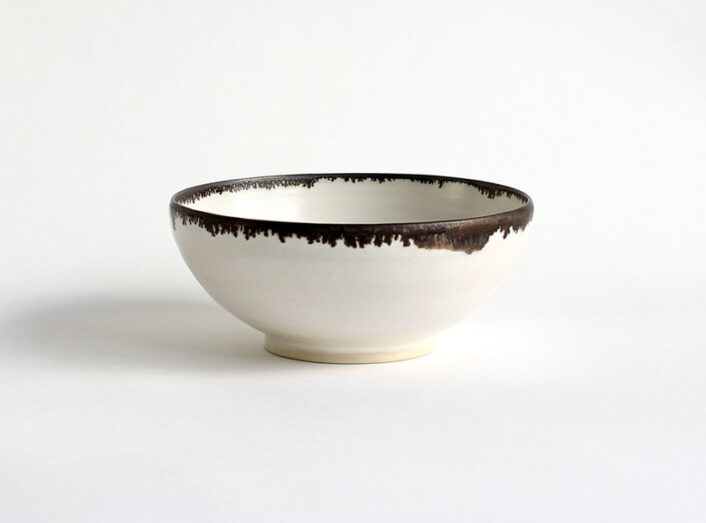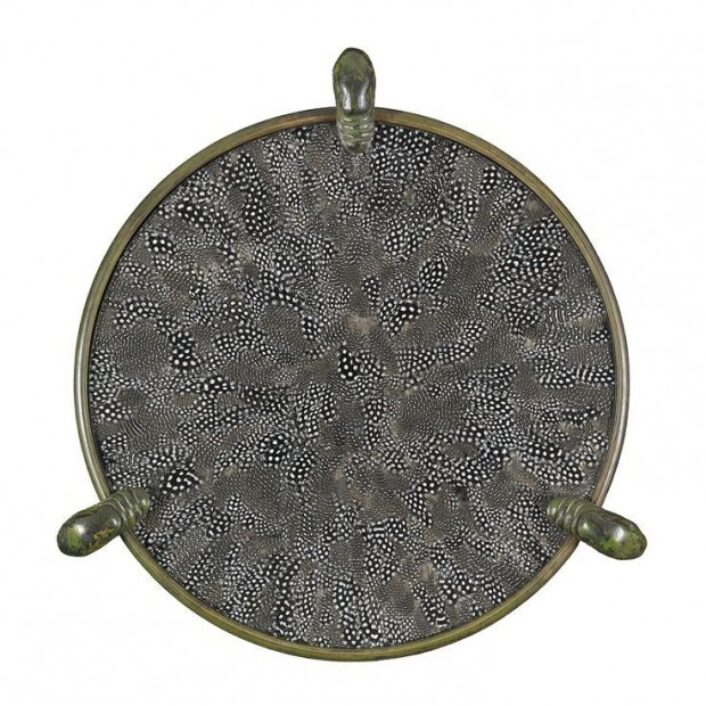Design
Roll & Hill’s wood furniture collection
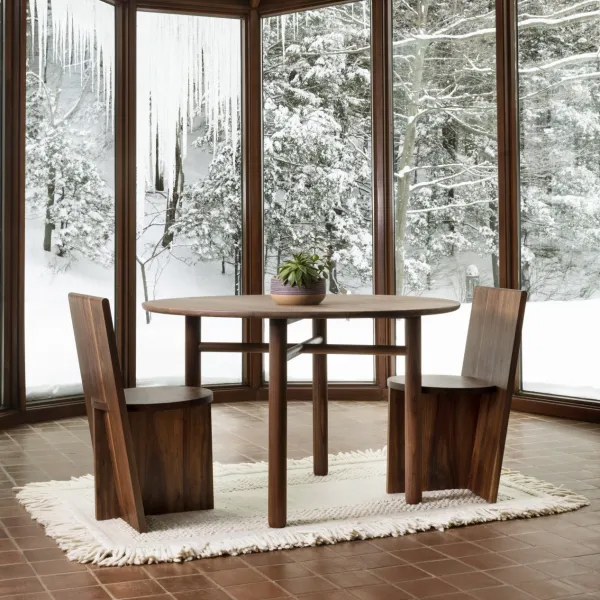
“Cross Bar” table and “Three Plan Chair” were both designed by Campagna. The pieces are available in three options: Hard Maple, White Oak, and Black Walnut (shown). The initial collection consists of eight pieces.
Image courtesy of: Cool Hunting
Roll & Hill was founded by Jason Miller in 2010 as a way to compete with some of Europe’s top labels. The New York-based contemporary lighting brand did more than keep with with the lighting scene dominated by European companies… it stood out.
Recently, the American brand has expanded into furniture. This was something that Miller had been pondering for quite some time. Thanks to the collaborations with some of the most innovate and exciting independent designers around, Roll & Hill created an amazing furniture collection that is a perfect compliment to its stunning lighting collection.
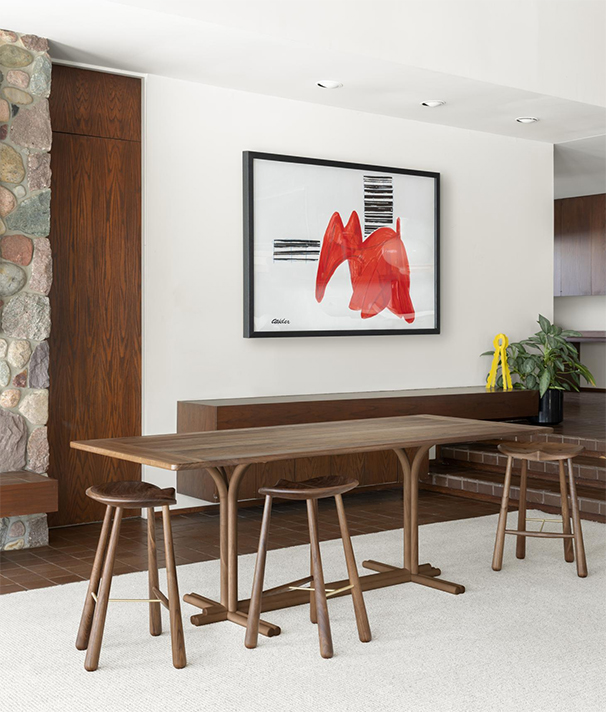
Miller designed the “Lexington Table” and Karl Zahn designed the “Taper Counter Stool.” The stools are designed in wood and unlacquered brass.
Image courtesy of: Wallpaper
In order to produce this collection, Roll & Hill acquired Alexis Manufacturing Company, a Grand Rapids, Michigan-based furniture brand. The experienced, 75 year old company is known for its production of complex wood components and wood seating. Those assets, in addition to Alexis’ artisans and experience, assisted with Roll & Hill producing a high- quality, enduring collection.
The all-wood series consists of dining table, chair, bedside table, dresser, bar table, and stool, and is made from three different types of wood: walnut, maple, and oak. This initial collection which debuted last spring was designed by Jason Miller and two other designers, Campagna (a Portland-based minimalist design firm) and Karl Zahn (a freehand product and furniture designer from Brooklyn). Over time, Roll & Hill will launch new pieces via collaborations with other designers. One designer who has already signed on is Jenna Lyons, the style icon and former J. Crew creative director.
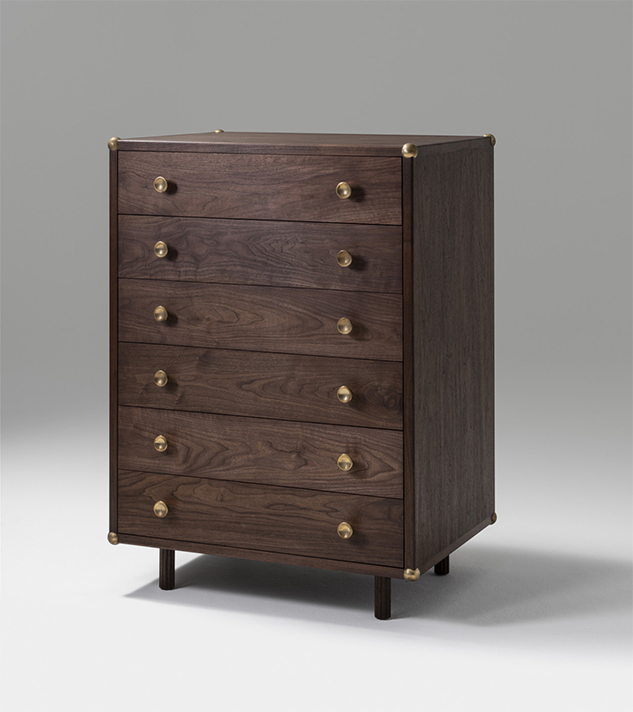
Lafayette Dresser
Image courtesy of: Design Milk
The company remains committed to on-demand production which allows each piece to be personalized according to the client’s specific requests. This is feasible thanks to their two production facilities in Grand Rapids, Michigan and Sunset Park, Brooklyn.
Especially fascinating to Miller was Alexis’ long history and commitment to family. Familiar with Alexis because they were the wood source for Roll & Hill’s lighting designs, when Miller heard that the company was closing its operation, he was instantly interested. About how this purchase came about, Miller told Architectural Digest, “We kicked it into gear and started doing our research.” Within a week, the research confirmed that Roll & Hill would immediately acquire Alexis Manufacturing Company. Since its founding in 1946, the wood manufacturing company has been building upon its reputation for uniting craft techniques with modern manufacturing processes. This was the key… and just what Miller was looking for. As he explains, “A lot of what we were finding out there were the two opposite ends of that spectrum, but [Alexis Manufacturing] had the ability to manufacture high-quality furniture at a good price in volume. It took us almost eight years to get the manufacturing in shape to be able to produce at the volume we do at Roll & Hill. By purchasing Alexis, we’ll be able to enter the furniture category in a much shorter ramp-up time.”
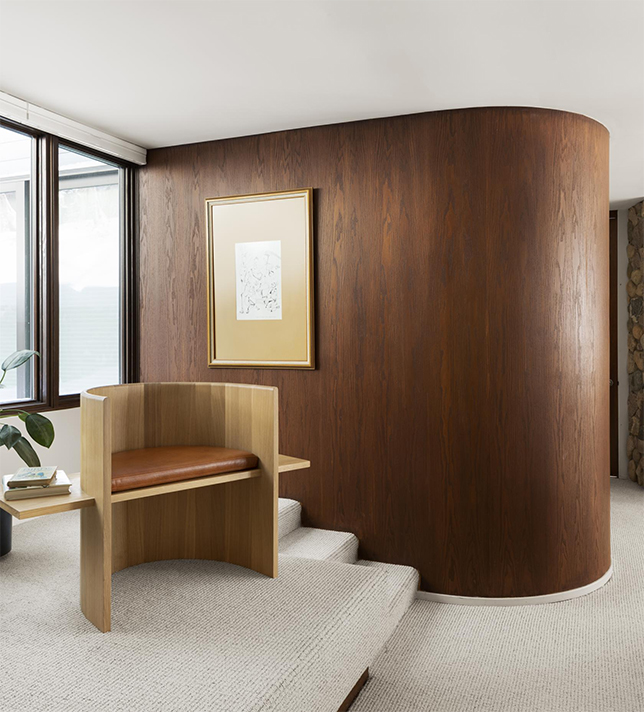
“Sit, Set Chair” was designed by Campagna. It is available in Hard Maple, White Oak, or Black Maple and leather.
Image courtesy of: Wallpaper
Setting up an operation in Grand Rapids was important… the city was once known as Furniture City due to its long history of fine wood production. In 1946, the father and son pair of Ivan and Norman Alexis opened their long-lasting firm and until recently, the company focused primarily on fine wood seating. They served as a “white-label” producer for established furniture companies.
In 1974, the company was sold to Hekman Furniture Company; it was sold again to Howard Miller Clock Company in 1983. When Howard Miller Clock Company announced that they were retiring Alexis, they had already sold the building that housed the manufacturing plant. Once he became serious about the venture, Miller needed to quickly find a place to for the manufacturing facility… sadly, yet luckily, the area had plenty of vacant buildings. Miller planned to bring back as many of the original fourteen employees as possible… welcome news for those that had been laid off.
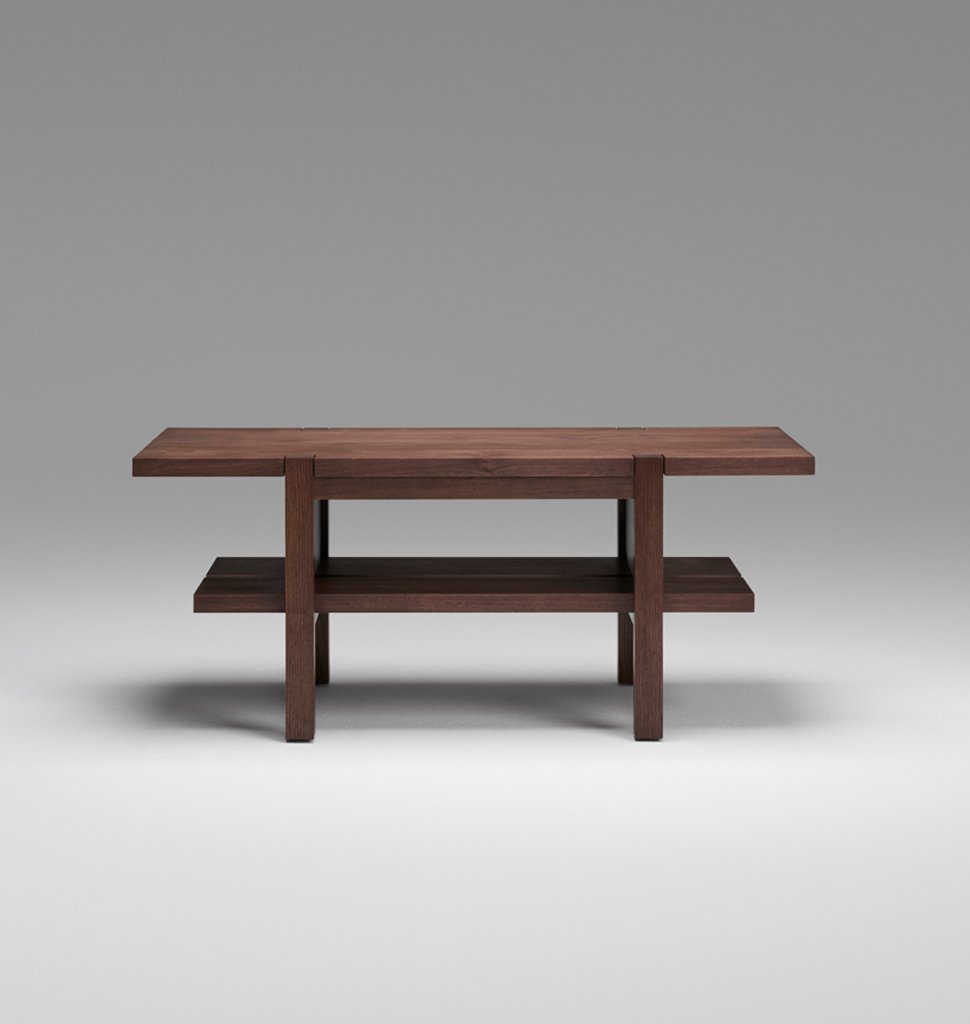
“Chamber Side Table”
This table is from a series of pieces originally designed by Post Company for Inness, a Hudson Valley resort that only purchases pieces that fit in seamlessly with the surrounding landscape.
Image courtesy of: Roll & Hill
About why Miller decided that Roll & Hill should add furniture to its collection, he told Wallpaper, “When I started Roll & Hill, there was one mission – to create well-designed contemporary lighting that would appeal to an American audience. At the time, this was somewhat of a novelty. Most of what was considered good contemporary design came from European companies and, as a result, there was a disconnect with the American consumer. I wanted to bridge that gap. The design landscape has changed quite a bit since the first decade of this century, but I still think our mission holds true. There are not a lot of manufacturing companies in the US that focus on contemporary design. Our furniture will fill the void.”
Indeed it will… we have no doubt!

